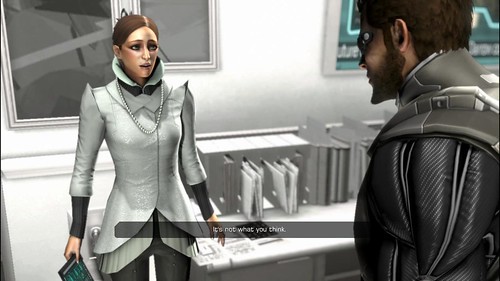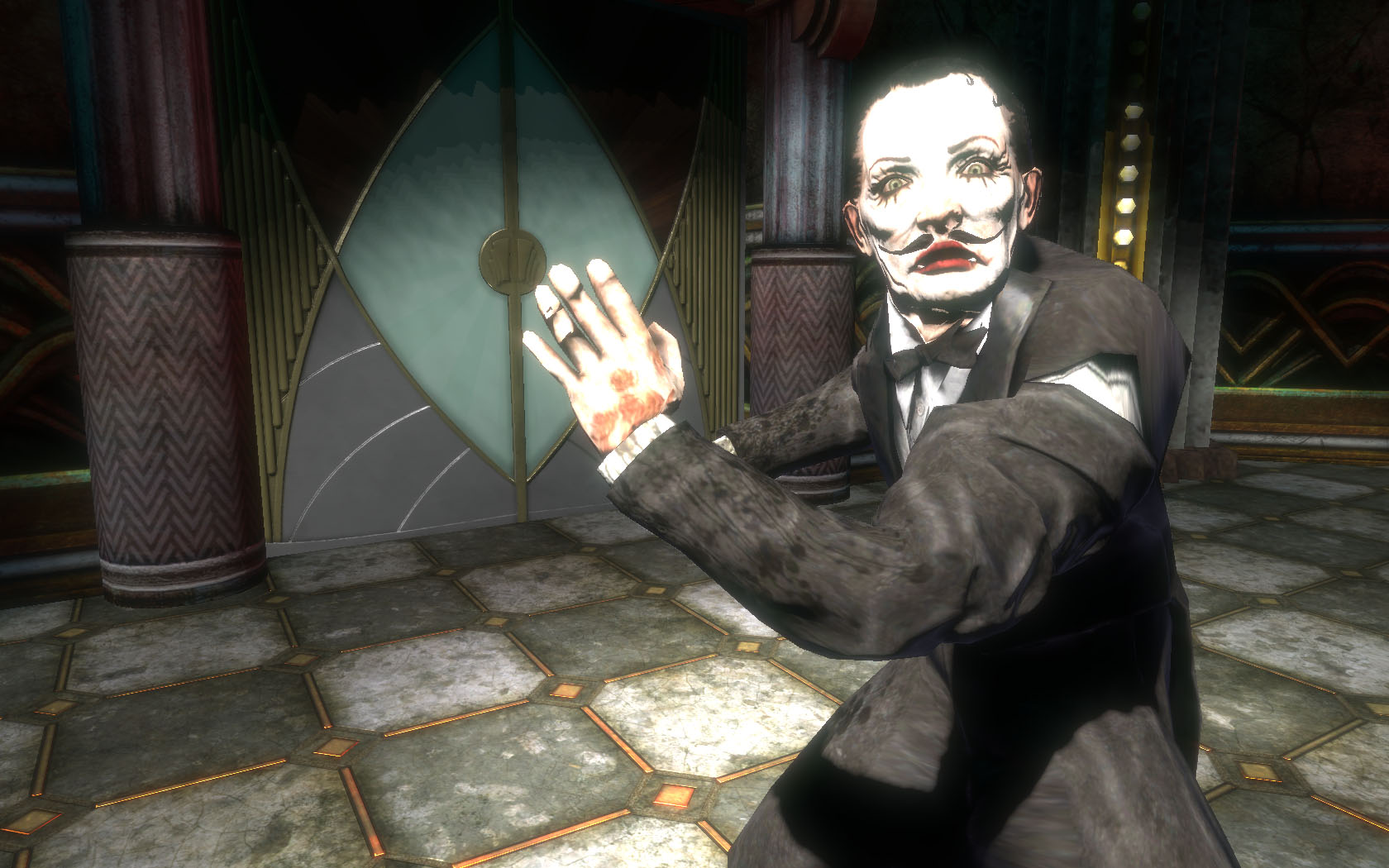The three kinds of video games characters
A study of the three categories characters in video games fall in.

Hello everyone. After a long while without posting (been pretty busy lately, with the uni and my -still unsuccessful- research for an internship... and the release of Xcom and Dishonored too, I'll admit.), I'm coming back with a new article, pretty much a sequel of my precedent one about the general creation of characters for stories. This time, I will focus on the specificities of characters in video games.
For this analysis, I will divide the characters in three categories, and give details about which ropes to pull to have successful characters in each of these categories.
First category: the playable character
Before going further in this part, I would like to clarify one thing. By the playable character, I am talking about the one character the player is in control of. Of course, this is, much more often than not, the "main character", or the "hero" of the story, but this is not always the case. Here are some examples where the playable character is not the main character:
In Fire Emblem 6 (the first fire Emblem released outside of Japan, uder the title of "Fire Emblem"), whil the main characters of the story are Lyn, Eliwood and Hector, the player actually incarnates "Marc", the stategist ordering them around the battlefied. This Marc has a purely gameplay role, and is almost useless to the story.
In Baten Kaitos, a RPG released pretty late in the Gamecube's life cycle, the player incarnates the "guardian angel" of Kalas, the main character of the story. Other characters will often refer to him in dialogs, asking him his opinion on various situations etc.
In most RPG games, where you have a team, the "playable character" is the first one you start playing with. You know, that guy who fights with a sword, has better stats than anyone else, and is always, always in your team? Especially if your game has real time fighting, it's the one you'll always end up controlling, because the other ones are not as fun to play as...

So you forgot the pizzas? No problem, we actually needed a healer in our party!
So, now, what are the characteristics of these characters? Usually, they're not the most develloped character around... Well, most of the time, they don't speak at all. Just think about the most influencial characters in video games history. Most of them fall into the "silent protagonist" category, in which they either don't speak, or don't say anything really relevent. Mario, Link, Samus, Crono, Chell, Gordon Freeman, Doomguy, Oldschool Sonic, the hero in Bioshock... Most video games iconic characters are silent protagonists.
Silent does not always mean mute. In these games, dialogs are often implied, but not written. Add to this the fact that they usually don't have a very developped personnality.
In any other media, this paperthin main character would have been a major drawback. But in video games, I believe it is almost an obligation. This character is not really a character so as to speak, but more a window for the player to gaze through the story of the game. He is the character you're in control of, he does what you want him to do, he acts as you want him to act, he thinks what you want him to think.
The reason I do a replay of Morrowind almost every year is mostly because the game allows me to craft the main character I want, and roleplay as I want... I once made Kahjiit thief who killed any slaver he ran into, then a proud Dunmer named Indoril who was sure of being the Nerevarine on the second he set foot on Vvardenfel, an honorable altmer mage who descended into a crime driven madness when he caught the corprus, a breton bard who had a sixth house phobia... And every single one of these experiences felt really unique, as if I played a different game each time, while still often doing the same quests over and over.

Avernum 3
Another series I loved for this was the Avernum series. The game gave you a world to explore, but no real character so as to speak. It was up to you to decide weither you wanted to have a lone hero, a group of childhood friends, a rag-tag team of guys who ended up toghether for no specific reason... All you had to do was to create their stats. Some of the games actually allowed you to hire NPCs with some basic backstory, but who also stopped talking once they joined your team. Even Avernum 5, who tells you that you are a group of freshly recruited imperial soldiers sent underground, allows you this level of personnalisation: it did not tell you how loyal you were to the empire (and it matters A LOT during the main quest), why you joined the army in the first place, or anything. This contrasts highly with the the game NPCs, which all have their own lines, own business, own history, own personnality... Every dialog was unique, even with the merchants or the inkeepers. They also had reactions to your group, both his reputation (bandits would try to cut your throats early in the game, but easily run away screaming once you started to get renowned), but also his composition. You had the choice between humans, slitherins (lizardmen) or nephils (feline men). The nephils are a pretty closed people, who barely kept any contact with outsiders since the Empire tried to kill them all. I remember one point, in Avernum 3, I had run into a nephil settlement, and they allowed me in because they saw I had a nephil with me... 2 hours later, I ran into a group of travelling nephils, who actually attacked me because they hated nephils who forgot what humans did to them and befriended humans. These kinds of separate reactions for a same choice actually quickly led me to think about why exactly this Nephil was in my group, and what was his attitude towards humans. Maybe he was a slave, or maybe he was the leader of the group, since he was always the one walking in front of the others (it was actually because Nephils get a bonus for finding traps...)...And what impessed me the most, is that the team behind these games, the guys at Spiderweb Software... Was only composed of four people at the time. Four people who managed to create, on their own, a huge, and reall well crafted world. Congrats, guys.

Why are you so angry?
Anyway, time to get back on subject. Some people might complain that a silent protagonist is a huge handicap if you want a really well developped story, especially if you want a branching story. Of course, as technology develops, we can now afford to completely include the choices of the player in the game, both in terms of gameplay AND story. But you'll have to be VERY careful with that, as it is pretty easy to get this wrong. One example is Deus Ex: Human Revolution. For 90% of the game, you are in control of every act and word did by Jensen... Until that scene where he finds Megan again. I, for one, was pretty happy rescuing her (especially since finding her back and rescuing her is a pretty long quest)... And Adam's angry reaction completely broke the immersion for me. It was not the Adam I had imagined, it was not me.Another game that had trouble with that was Vampire The Masquerade: Bloodlines. This game also left a lot of room for personnalisation... At least for the first two thirds of the game. It would appear that Troika ran out of both time and money during the last stages of development, and rushed the end of the game. Which means that, while social characters were entierly viable in the early steps of the game, during the last scenes (more precisely, starting at the Giovanni mansion), everything else is fight, fight, fight, which are the easiest and fastest levels to implement in a game.

Trust me, the third ending from the left is the best one !
It can be also pretty hard to include enough reactions to cover every potential reaction by the player, and have them actually matter in the game. By definition, branching storylines lead to a very big number of potential solutions, and the worst part is that most players will only experience 1 to 3 of the options you devised for them. Nah, forget what I said... The worst part is when you are doing a sequel for your game, and have to implement both new choices and previous choices (meaning creating a lot of assets that won't be used in the game), or only make one set of choices canon and the others irrelevant (thus aliening yoursefl from a large part of the previous players) or make all choices irrelevant (then alienating yourself from every player).So, to conclude this first part, I'd say that, when designing the playable character in a story-driven game, you have to remember that his role is to act as the interface between the player and the world the game is set in. Do not make him too deep, or give him any secrets, it will only break the immersion of the player. Now you might want to give him some personnality, or some specificities, but then you must be careful about what you want your player to feel and what you show your character to feel.
Second category: The staying characters
In this category I chose to put the characters that actually stay along the playable character during the whole course of the game, or a least a a long part. In most RPGs, they are the guys who join your team and fight alongside the main hero. They also usually take up the role of guides, giving the player hints and information about the world he navigates in.

I actually liked her voice
Think about it. There are many games where you have a NPC that serves as a guide, either always with you or appearing out of thin air whenever you need him. Almost every Zelda game has one: Navi, Tatl, Ezlo, Midna, Fai... Other games use them: Jack in Vampire the Masquerade, Atlas in Bioshock, Vald in Magicka, Ford Cruller in Psychonauts, Bottles the Mole from Banjo-Kazooie, The Watcher in Darksiders, etc.As I said earlier, the playable character will represent the player in the game's world. This means that he will often know very little about said world... So it is necessary to have someone who will explain everything to him.
Actually, these characters will often be the most defining ones in the game. Their attitude towards the playable character will actually be your best tool to define him, more than anything you might want him to say or do or think. Just look, for example, at profound respect the NPCs show Gordon Freeman at the beginning of Half Life 2. How impressed they look when they talk to him. I had actually played HL2 before the first one, but this still taught me much more about my role in this universe than any introduction or cutscene or anything.

Double H
Of course, these characters are not always mentors. But the fact that they remain next to the player for long times means that they will usually be allies. Their role is primordial, they will be the ones litteraly making the story of your game. It's these characters you need to work on, to implement in the game for real.And it means that they should be a part of the story, right, but also included in the gameplay itself. Their presence must change the way the player plays the game. The mentors give tips to the player. Allies should actively participate in the game, such as Double H, from Beyond Good and Evil. The reason his relationship with Jade is so important in the story is mostly because they also collaborate in most gameplay parts.
Now you don't absolutely need them to actively collaborate in the game. But you need them to have an actual influence onthe gameplay itself. Is the NPC a fighter? Have him participate in the fights. Is he a logistics specialist? Have him bring you some goods in a hard and long mission. Is he a spy? Have him give you some clues about the next level you'll play in. Gameplay is still the most important part of video games (despite some people claiming to bring "cinematic" experiences), and what constitues 90% of the player's experience, so you want to use this time ot help your storytelling.
Third category: The passers-by
In this third category, I will talk about the characters that the player only sees for a little while during the game.
One of the specificities of video games is that advancing in narration also implies moving to new locations. Moving through a game's narrative is a journey, and it's only worth being taken if, every time you move to a new chapter, you also move to a new location.
But this also means that you can't possibly take all the characters the player met to said new location. So the vast majority of characters your player meets will only fill a small part of the narrative, and be left behind forever once the player moves to a new city / location / level / environment...
In this third category, I will throw in all kinds of characters: basic NPCs (even the mute ones), ennemies, local bosses... These characters actually are not really characters so as to say. They're actually closer to anthropomorphic personification of the environment you're in than actual people. Friendly NPCs are here to provide you data about the place you're in, while hostiles ones will provide you challenges specific to said area. Indeed, I believe it's important, here again, to actually fully integrate the environment, including the NPCs, to the gameplay. The vast majority actually do this, but some gmes still rely on recycling the same ennemies over and over, with only a handful of more specific ones.

I actually killed him. Does this make me a monster?
One game that makes a good use of this idea is Bioshock. Every time you move in to a new part of Rapture, you meet new characters that clearly reflect their environments. In the medical, it's Steinman, the mad doctor. It's easily one of the most disgusting characters you meet in the game, and its level is the most unsettling one. Your travel also makes you meet Julie Langford, the scientist who created Arcadia. Interestingly enough, while this character is the only one not completely mad or trying to kill you, she's also iconic of the less disturbing and threatening area of the Game, Arcadia, notable for being the only one with vegetation, natural looking flowing water (rivers, lakes etc) and light.Obviously, these iconic characters can also be used to advance in the game's storyline. But as the storylines of video games are very fragmented, each ponctual character should first aim to make the present experience more noteworthy.
Conclusion
One thing you must remember that players usually look at the experience as a whole, gameplay, environment and characters.Therefore, you should make sure that every elements, including the characters, fit in the chole experience and brings something to new to the other elements, while the playable character acts as a window to this world.
Bonus [SPOILERS ABOUT BIOSHOCK]
Have you noticed how Bioshock actually makes its characters fit the different categories extremely well? And how much the revelations at the end of the game are astonishing?
Well, I guess these two elements are linked. It's because the playable character fits the silent, anonymous protagonist so well that the player identifies himself so much to him... And that the revelation about the character's past feel like revelations about the player's past (and more precisely when you consider that both the player and the character have no past so as to speak in the game's world). And it's because Atlas perfectly fits the role of a mentor that his betrayal feels so strong.
Read more about:
BlogsAbout the Author(s)
You May Also Like













